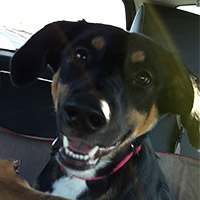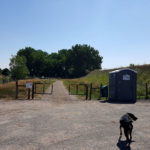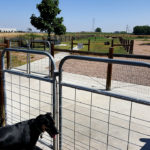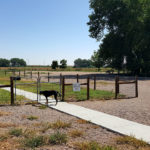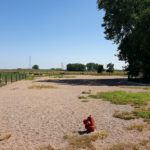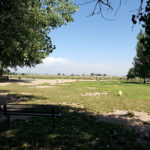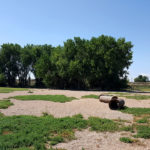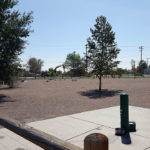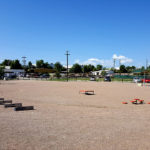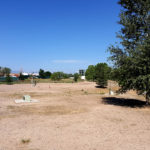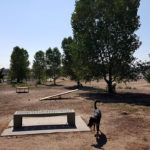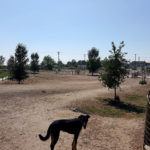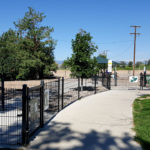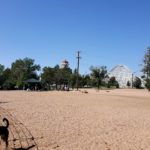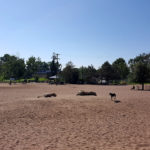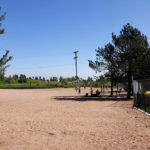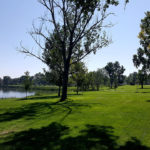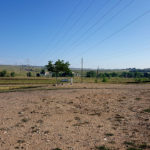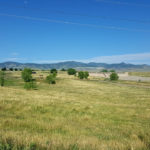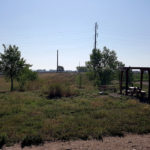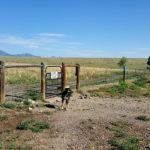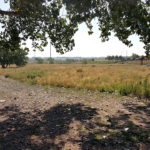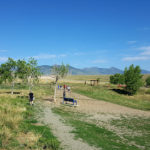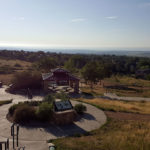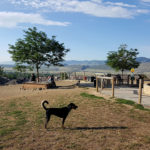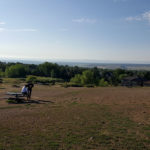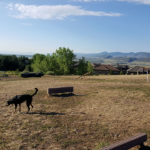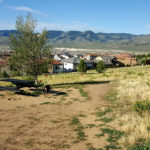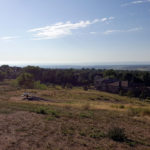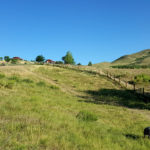Dog Sci is an amateur dog training and science blog by Sam Shadow (SMSHDW).
Training your dog too much
Ellie is a well-behaved and calm dog. She achieved that from her natural personality and a lot of training during the puppy years. But I’ve grown suspicious of two things: 1. my training may not have been as effective as I think and 2. I might have trained too much or too strictly.
Note: for this article, I am referring to the “puppy” stages as primarily from about 6 months to 2 years. That is the time period in which I was most focused on obedience training.
1. my training may not have been as effective as I think
I have this suspicion that the results of rigorous and strict training may not fully manifest themselves until adulthood. Another way to think of it is that, puppies may act in a way that doesn’t necessarily indicate their future obedience even though your training is actually working. The reason is because puppies, like children, are more spontaneous, unpredictable, energetic, and driven by their emotions. Your training may be constructing a well-behaved adult dog, but it won’t be fully realized until they’ve grown into their adult mind. The problem is that, if you don’t know this, you may overcompensate and train even harder because you’ve developed increasingly high expectations for how your growing puppy should behave. But expecting that level of consistency in a young puppy will only result in frequent disappointment as they express their high levels of energy in ways that you consider bad behavior.
2. I might have trained too much or too strictly
Due to the misaligned expectations from above, I found myself training extra hard and setting strict ground rules to try and force this expressive young dog into complying with my expectations. The result being that I may have suppressed Ellie’s natural personality. Instead of a more carefree dog, I have a dog that is always looking to me for commands, always slightly on alert, almost too calm and obedient at times. I should have been less serious and more accepting of failure. I should have let things go and moved on to train another time. I may have successfully shaped her into a reliable and obedient dog, but then I continued to drive the point across until she felt powerless to make decisions without my guidance. This is an interesting problem to consider. How do our unique personalities and flaws influence our training? How does that inadvertently affect our dogs? How much of it is misaligned with what we’re actually trying to achieve?
There are many other factors to consider as well. As a new dog owner, I was very excited to test my hand at training and as a result I focused far more on training than play. In a way, it reminds me of the relationships where one parent is known as the disciplinarian while the other is known as the “fun one”. Both are important, but it changes how your child sees with you. I’ve also observed, and been told, about aspects of my own personality that probably played a hand in shaping Ellie as well. I am calm, quiet, rational, level-headed, rarely emotional, and shy. All those traits undoubtedly passed on to Ellie who has spent 99.9% of her life with me. Mimicry is a powerful mammalian behavior and what I see in her may be a reflection of myself. To create a more playful and boisterous dog, I probably need to change how I express my own self in the world. Another facet of my personality is that I am highly observant. I’ve watched Ellie closely her whole life in an effort to shape her behavior and keep her safe, but that level of scrutiny may have reinforced a somewhat paranoid dog. Imagine being studied by a powerful, seemingly omnipotent figure your entire life. I’d imagine that could intensely change how you behave and express yourself.
Obviously, I don’t know if these things are true, but I have internalized this lesson as something to carry over to my next dog. In the meantime, Ellie leads a great life with an owner that is focused on her well-being and happiness. But I am a highly critical person and rarely satisfied with the status quo. I can see paths forward that lead toward improvement and perfection, but I could do with a lesson in accepting failure and relaxing the rules. Especially when the target of that focus is unable to share an opinion or vote on the measures. Sorry Ellie, I’m doing my best!
Not Even Once
One of the reasons it’s important to remain engaged and aware of your dog’s behavior is because you’re trying to build a model to base future training on. For your current dog and the next. To do this, you have to spend time thinking about it, writing it down, and ensuring that you actually understand it. Otherwise the lessons will be lost and you’ll make the same mistakes again.
As a result, this particular insight is not something for the first time dog owner since it requires future knowledge. The insight is: the ideal strategy behind all dog training should be to mitigate issues before they even arise. You need to know where certain behaviors lead and either avoid them or control them to ensure your dog behaves properly. Thus the title of this post, “not even once”. I have another blog called Nothing Definitive where I’ve talked about this before on the human side specifically in relation to unhealthy eating and other willpower-based life improvements.
If you’re unable to stop a bad behavior, you need to recognize it right away and develop a strategy. Don’t shrug it off and don’t wait for it to happen a few more times. Behavior can set in quickly if you’re not careful. Recognize the behavior and the associated body language or triggers and catch it in the moments before it happens. Most people tend to scold after the crime is committed, but this is an amateur approach. You need to recognize the subtle elements that lead up to a bad behavior and intervene in those brief seconds. This will break the sequence and the dog will succeed at altering its behavior in a positive direction (assuming you give it one).
Unfortunately, this is hard to do as a first-time dog owner or a dog owner that didn’t pay close attention the first time around. You’ll make mistakes and be forced to deal with the fallout, but that’s perfectly natural. There are numerous behaviors that Ellie does that I should have stopped earlier on, had I known. Many of them seemed innocuous or even cute at the time, but actually lead to behaviors that weren’t ideal. This is why it’s important to pay attention and ruminate on what you observe.
Accounting for Inconsistencies
Mental states vary and so should your training strategies
Dogs have varying mental states just like humans. Some states are more obedient than others. Some will be synchronized with you while others will grind against your expectations. This is coupled with the fact that humans have inconsistent mental states and when you don’t align you may react negatively. As a result, I realized that rigidly structuring our walks was a bad strategy despite the logic of consistent training.
These fluctuations imply that it may be more important to be aware of the present situation and learn to accurately assess them versus setting strict ground rules. You need to be flexible and dynamic and ask yourself basic observational questions. What specifically is causing my frustration? Am I feeling impatient and overreacting? Are they obeying commands or ignoring them? Consciously recognize your answers to build an accurate observational model of the current situation. From there you can start to experiment with different strategies to see how well they work and eventually internalize them so they become automatic. The goal is to build a wide array of understanding and strategies that you can employ in different situations to optimize successful behavior and maintain a positive relationship with your dog.
For example, if you’re feeling patient, allow them to explore freely and at their own pace. If you’re in a rush and need more obedience, require eye contact and start training as you walk around the neighborhood. This will engage their mind and create a different atmosphere than a normal walk. If they’re lunging at other dogs and people, stop walking, and make the experience about quietly sitting to the side while others pass. Forget about walking and just let their mind be engaged while you work on training. “Walks” don’t necessarily have to be about destinations and exercise, they can be about training and socialization in localized areas. I also like to spontaneously grab their attention and give commands to ensure they never go too long without some obedience training. At a minimum, it should always be a fading memory and not something they’ve completely forgotten. Or maybe you’re both in a playful mood and the walk should be about a personal connection that’s filled with excitement and happiness. There’s a million options and the more sensitive you get at detecting your own and your dog’s emotions the more you will see what’s possible. Life is incredibly complex and most people never stray far from the surface level, but, if you’re an adventurer, you can explore its infinite subtleties.
Note: I put this under the Consistency category because it’s an important realization that despite the benefits and logic of consistency it’s not always the best strategy. There are potential counter arguments to being consistent with your dog. Not necessarily by being random as the other side of this category implies, but by being “inconsistent” or planning for inconsistencies.
Boundary and Territory
Visualizing dog behavior as a stream of 1’s and 0’s that you can interact with and alter over time
I have a tendency to associate “no” only with truly bad behavior whereas I use “good” more ambiguously. There is also a third adjective describing “neutral” responses which may include you exchanging looks with your dog, but that involves no reaction or commands. These statements define an invisible boundary in our world that your dog navigates. I like to think of it as binary with 0 = off = bad and 1 = on = good. In every moment, there is a continuous string of 1’s and 0’s being activated and deactivated in the space around you by the decisions your dog is making. You define the path it takes by instructing it. As your dog looks towards the garbage, a good trainer has identified an early point to ensure the dog doesn’t consider that an option. As it stares and starts to move forward the 1’s turn to 0’s and the dog reacts by changing focus or backing off. Not because it understands that going in the trash is bad, but because it “feels” or remembers the negative association. If the dog hasn’t been properly instructed though then it remains as 1’s and the dog is free to move forward into the trash beyond the barrier you failed to construct into new territory not previously defined by your rules. It’s basically a changing data stream with clear definitions of what is good and what is bad. If there is ambiguity, then the dog won’t know and maybe that’s where we get into neutral territory or just a mix of 1’s and 0’s the dog can’t properly interpret. In a more simple sense, what I’m talking about is clear, unambiguous language about what you want from your dog. Early on I was saying things like, “don’t do that,” “hey,” “cmon,” pay attention,” etc. These are too complex and don’t clearly define what it is I want my dog to do. If Ellie is standing near me and wandering around and sniffing she’s in neutral territory, but as soon as she steps too far away it’s a clear “no” command or 0. If she returns it’s a clear “good” command or 1. I try to refrain from saying things like “come back” or “hey, too far.” Human language is too ambiguous to an animal. Instead, “no” should create a clear boundary around “good” territory your dog can operate within.
The initial difficulty I faced with this was changing my perspective about what “no” meant. “No” was supposed to be an extreme, a truly bad behavior I didn’t want and most situations don’t warrant that reaction. But as I changed how I thought about it, “no” needed to become more common. In fact, it needed to become almost as common as “good” because the two define each. If most everything is “good” and only some rare occasions are “bad” then there is a lot of undefined territory the dog can navigate through without limits. To make this work I realized that subtle behaviors needed to be controlled instead of just major “good” and “bad” events. Ellie ran across the street a few times to meet another dog and was punished afterwards, but before that there were cues about the impending behavior. Those also needed to be defined with “good” and “bad” directives. Heightened interest in the other dog, shifting her body away from me, deviating from the walk, not listening to my commands, and then moving toward the other dog are all events which “no” can be used to further mitigate the risk of running across the street. All of them are bad, but the dog doesn’t know it if you don’t define them. On the flip side, I want Ellie to sniff around and be curious, I want her to chew on a stick and run around happily, I want her to be as free as possible. This is why I mentioned neutral behavior as well. This third type of behavior doesn’t necessitate a response. It is not something good you want them to do continuously or bad and want them to avoid, but it is within the territory of good behavior.
To successfully accomplish this you need to be aware and reflect on the behaviors and actions your dog takes. You need to recognize subtle cues that led to bad behavior and further sculpt the boundaries that mitigate them. Mastering this can also present a visual tool to better understand your furry friend and make wise training decisions on the fly. It may also help explain why your dog does what it does and why it doesn’t understand certain other things. It can also open the door to a more healthy relationship and a more realistic perspective of how they think.
Additional note: along with unambiguous language, this method encourages rigorous consistency. If you allow your dog to be bad sometimes, but not others, there will be a confusing mix of 1’s and 0’s you’re relying on them to interpret properly. If, however, you work to ensure paths and boundaries are clearly defined and very consistent, there will be little error your dog can make.
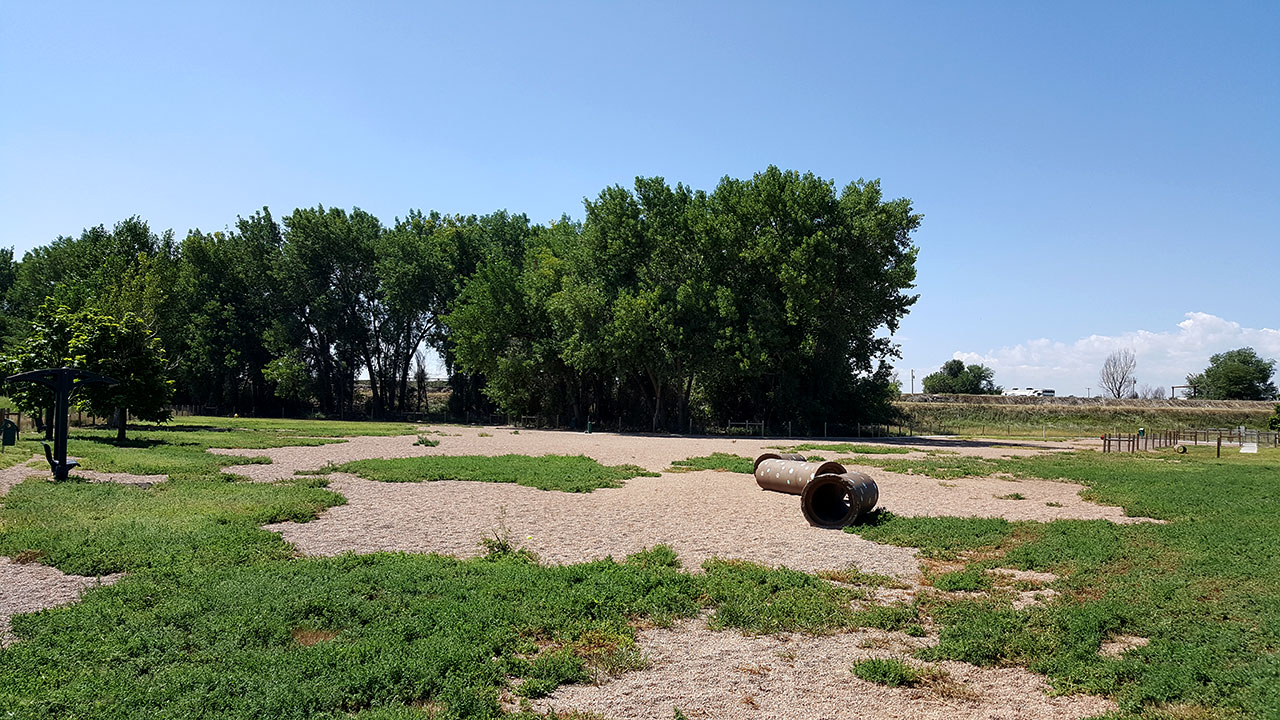
First Creek Dog Park
Location: https://goo.gl/maps/3zwRc95p9xn
Size: medium
Quality: high – this park is well maintained in a safe area
Ease of Access: medium – the parking lot is somewhat out of sight from the road but there is a clear sign. It is also not on a main road, but your GPS should take you right to the destination.
Features: 1 parking lot, porta potties, trash, 1 gated entry, fully fenced, benches, 1 small dog area, water fountains, decent amount of shade, 0 ponds/rivers, ok scenery, mixed gravel/grass, no agility course
parking lot, 1 dual gated entry, 2 areas, no agility course, water, shade, portapotties, trash, benches, commercial industrial park area, secluded, quiet except for airport
Cost: free
Sam’s Field Notes: this is a nice, secluded dog park somewhat far from central Denver. It is mostly quiet except for the airport. It does not have an agility course, however there are concrete tunnels your dog can run through. It feels much less popular than other dogs parks so you may not experience much socialization. Overall I liked this dog park because it felt nice and could be a great spot to relax and read a book while your dog plays.
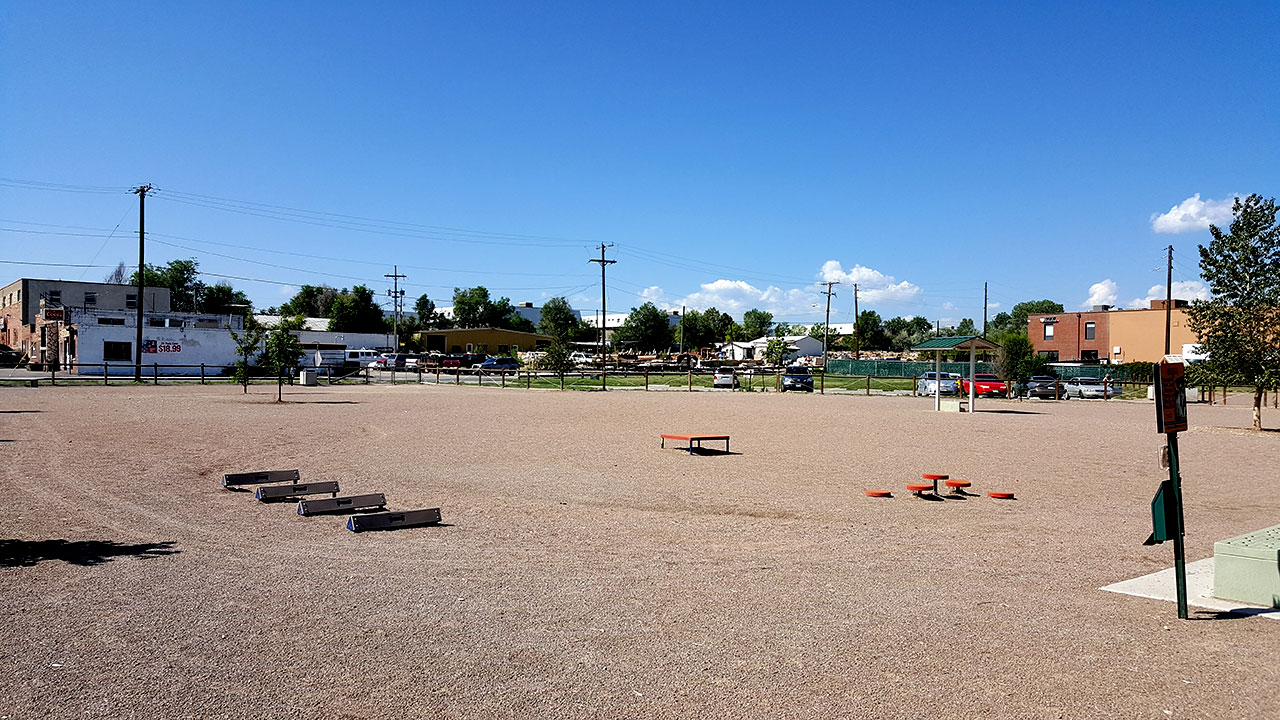
Little Dry Creek Dog Park
Location: https://goo.gl/maps/HCZ1VJP37vm
Size: small-to-medium
Quality: medium – this park is fairly well maintained in a lower income neighborhood
Ease of Access: easy – the main parking lot is right off a main road and easy to find.
Features: 1 parking lot, no bathrooms, trash, 2 gated entries, fully fenced, 1 small dog area, benches, water fountains, decent amount of shade, 1 nearby river with easy access, less than 1 mile of nearby walking paths (outside of dog park), gravel-dirt base, basic agility course, noisy
Cost: free
Sam’s Field Notes: this is a standard city dog park in a somewhat questionable neighborhood. There are no bathrooms so plan ahead. The agility course has 4 unique items and is in good shape. It’s next to a nice walking path near Little Dry Creek. It is also next to a busy road and is somewhat noisy. It felt less popular than other dog parks so you may or may not have much socialization. Half the dog park is dedicated to a small dog area and feels like wasted space that could have been open to all dogs. Overall this dog park is only worth visiting if you live nearby or simply want to use the agility course.
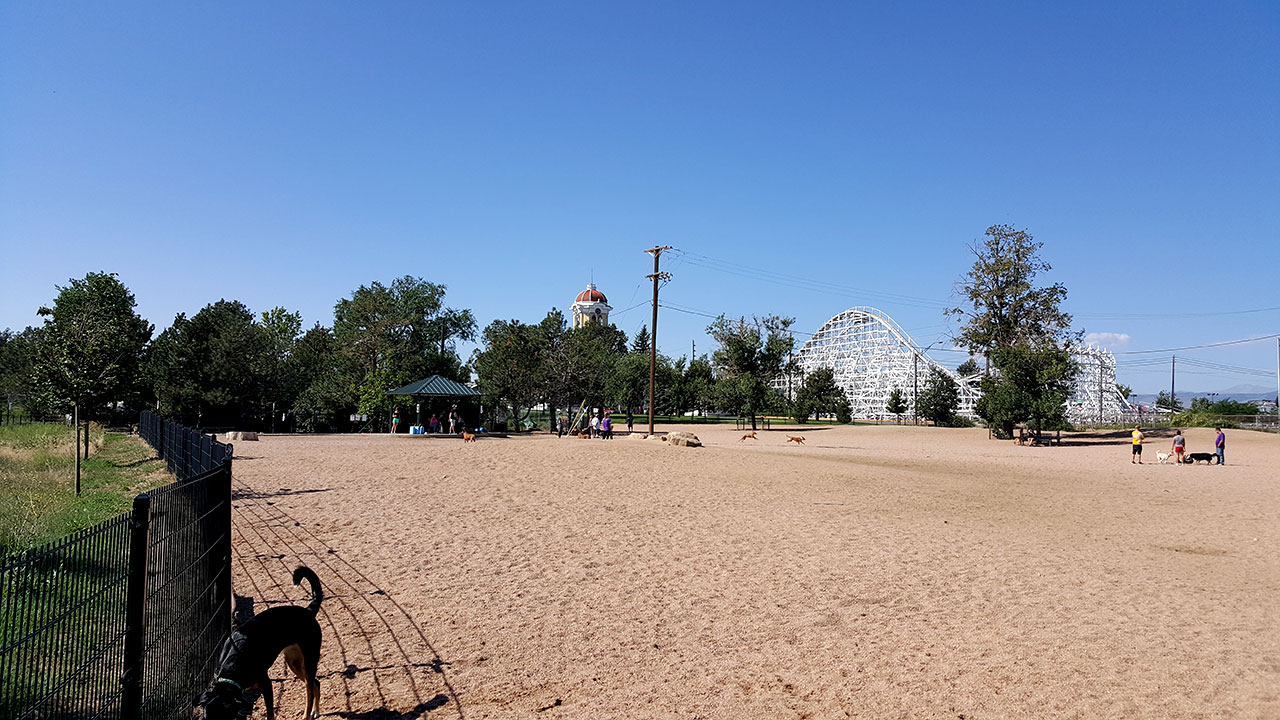
Berkeley Dog Park
Location: https://goo.gl/maps/9SjmJhrf6Qk
Size: small-to-medium
Quality: high – this park is well maintained in a lower income neighborhood
Ease of Access: medium – the main parking lot is easy to find, but it is not immediately adjacent to the dog park. Additionally, Google Maps gave me the wrong directions for the entrance. Input “Berkley Lake Park” as your destination instead.
Notable Features: 2 parking lots, 1 bathroom, trash, 1 gated entry, fully fenced, 1 small dog area, benches, water fountain, some shade, 1 nearby lake (outside of dog park), 1-2 miles of walking paths (outside of dog park), popular, ok scenery, gravel-base, no agility course, noisy
Cost: free
Sam’s Field Notes: this is a small-to-medium sized dog park in an ok neighborhood. It is next to 2 busy roads and is noisy, but is connected to a nice park with a medium-sized lake. It is popular so there will almost always be dogs there to socialize with. There is plenty of parking, a spigot for water, and a cool abandoned looking amusement park nearby (although I think it’s still in business). Overall this is a decent city dog park that is nicer than most, but not worth traveling out of your way for.
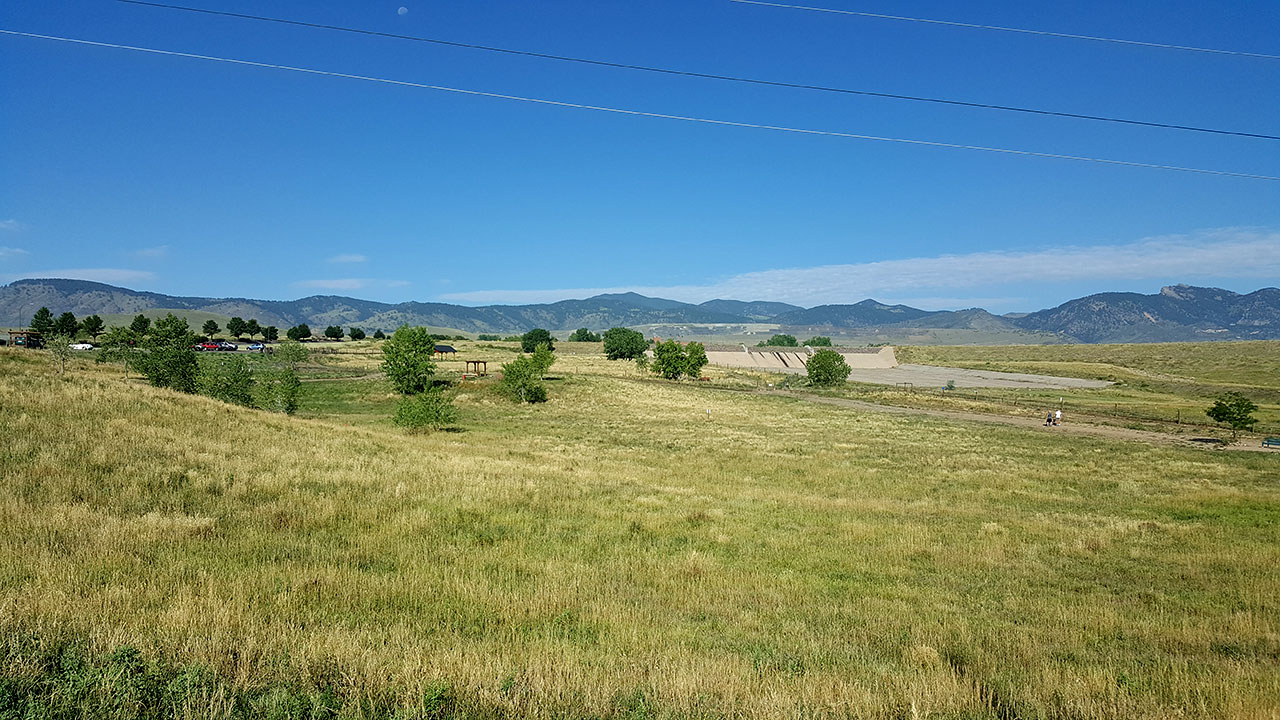
West Arvada Dog Park
Location: https://goo.gl/maps/Y6R2FL6aMfv
Size: medium-to-large
Quality: medium – this park is fairly well maintained in a safe area
Ease of Access: easy – the main parking lot is right off a main road and easy to find.
Features: 1 parking lot, porta potties, trash, 4 gated entries, fully fenced, 2 separated areas for all sized dogs, 2 small dog areas, benches, no water fountains, some shade, 0 ponds/rivers, less than 1 mile of walking paths, good scenery, mixed dirt/foliage/grass, no agility course
Cost: free
Sam’s Field Notes: this is a surprisingly bigger dog park than I thought it was going to be. However, it feels less popular than other nearby dog parks and is located on the edge of the city. There are two main areas that both large and small dogs can share and two small dog enclosures. Note: there are warning signs for rattlesnakes. The scenery is pretty good since it’s near the mountains and the North Table, but it’s below the Blunn Resevoir so you can’t see water from inside the park. Overall this is nice a dog park with a decent walking loop and plenty of space for your dog to run and play fetch.
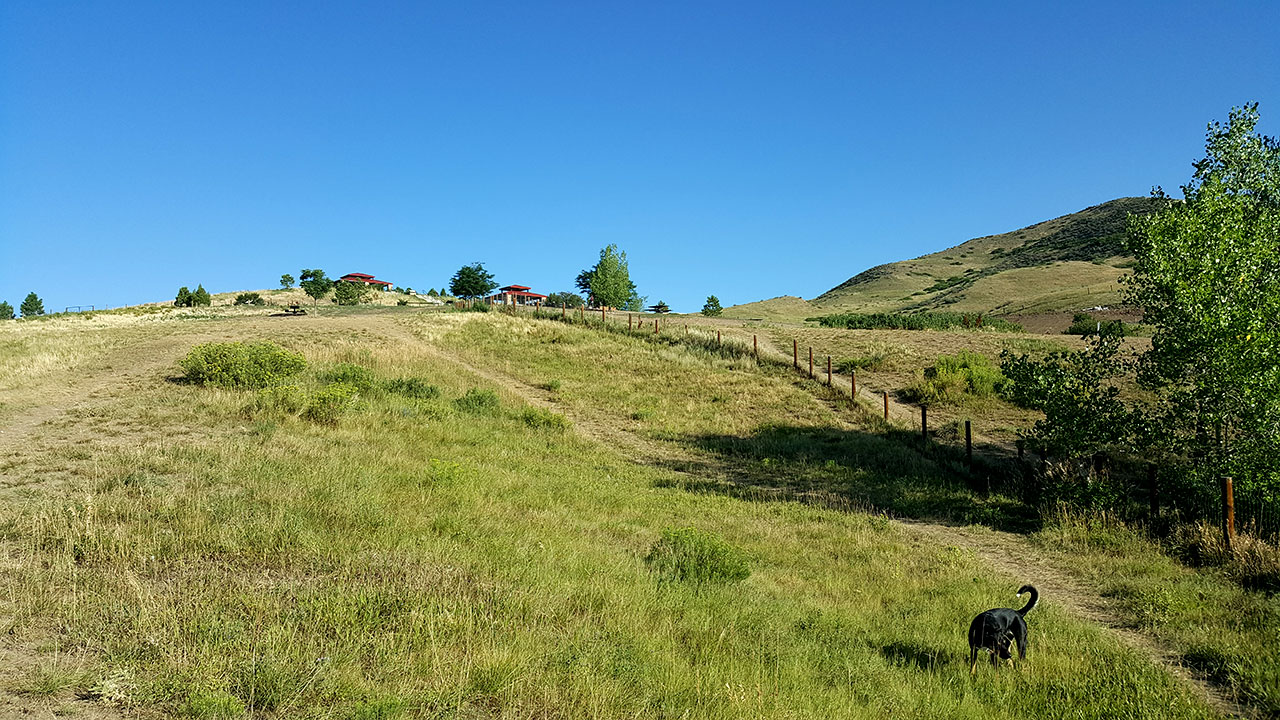
Forsberg Dog Park
Location: https://goo.gl/maps/DaDRgL5HTTL2
Size: medium
Quality: high – this park is well maintained in a safe area
Ease of Access: easy – the main parking lot is right off a main road and easy to find.
Notable Features: 2 parking lots, 2 bathrooms, trash, 1 gated entry, fully fenced, 2 separated areas for all sized dogs, 0 small dog areas, benches, water fountains, some shade, 0 ponds/rivers, less than 1 mile of walking paths, popular, great scenery, mixed dirt/grass/rocks, basic agility course
Cost: free
Sam’s Field Notes: this is medium-sized dog park on a main road near a nice suburb. It is on a hill and somewhat rocky so be sure both you and your dog are surefooted. The scenery is great and it’s part of a small, but well-maintained park. It seems fairly popular so there will almost always be other dogs there to socialize with. The agility course is better than most, but still falls under the basic category since there’s only 4 unique items. The dog park is split into two sections, but both large and small sized dogs can use both sides. Overall this is a nice dog park worth checking out.
Sidewalk Walking Hack
If you’re teaching your dog to walk at your side, a simple way to alter the walking experience and potentially reduce distractions is to keep your dog in the center of the sidewalk exclusively. This keeps them away from the grassy edges with all the good smells and could improve success rates as a result.
